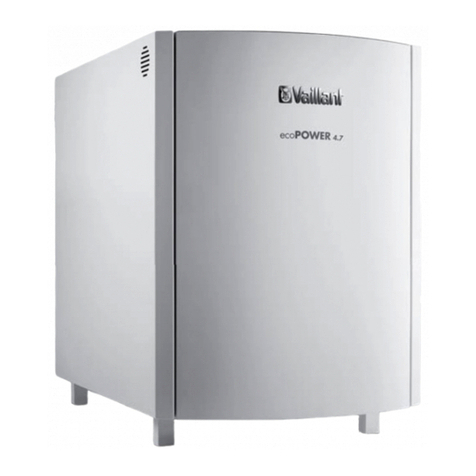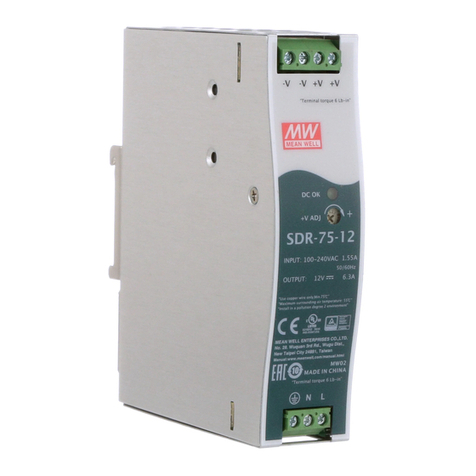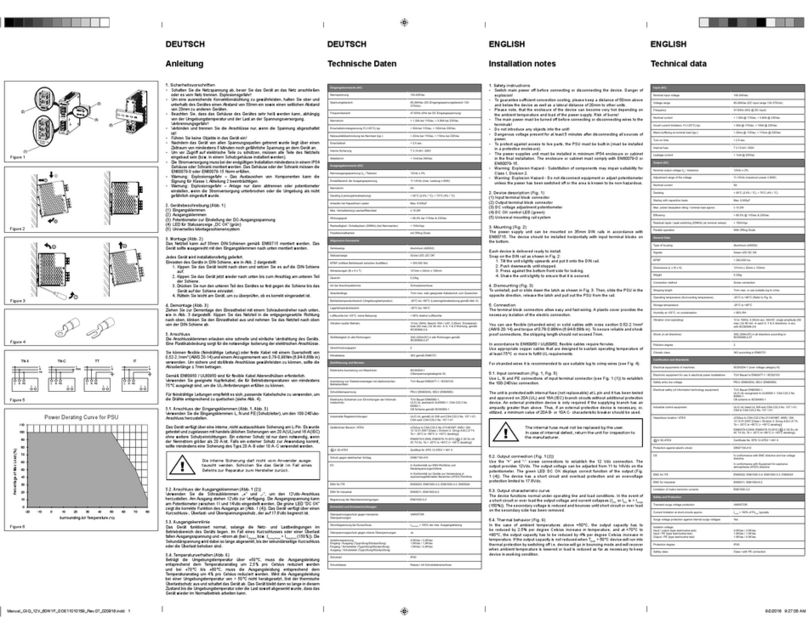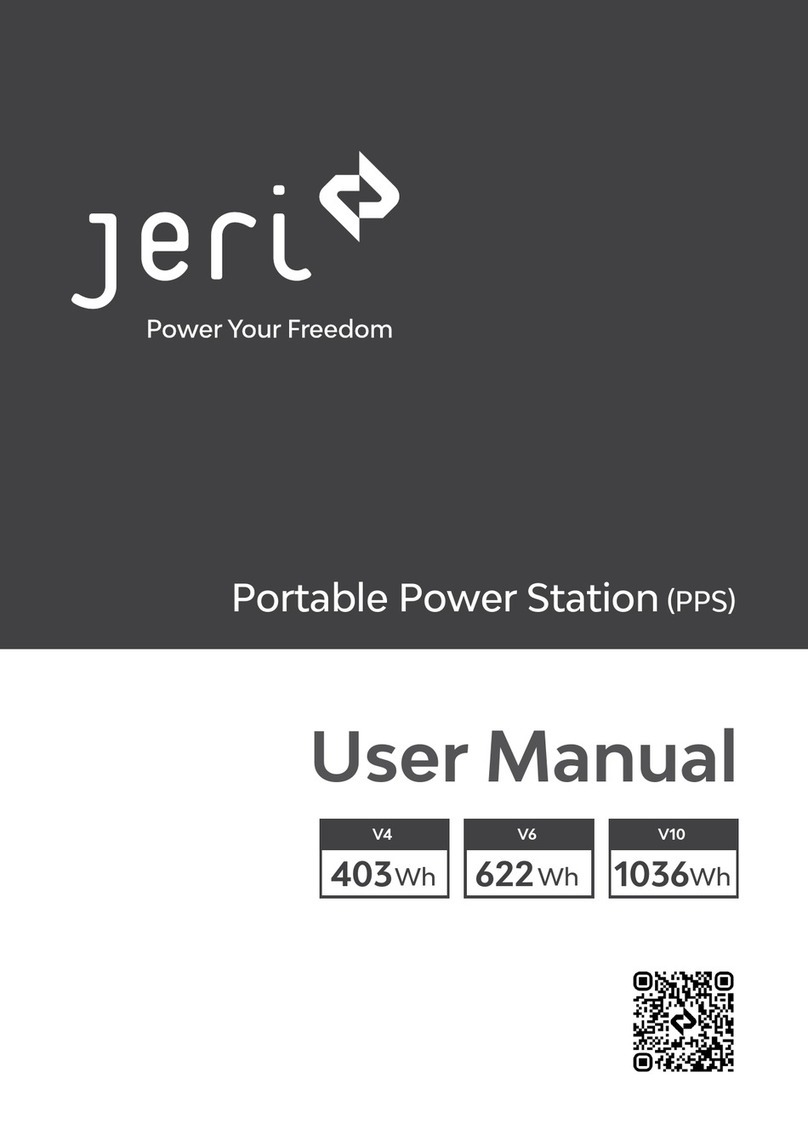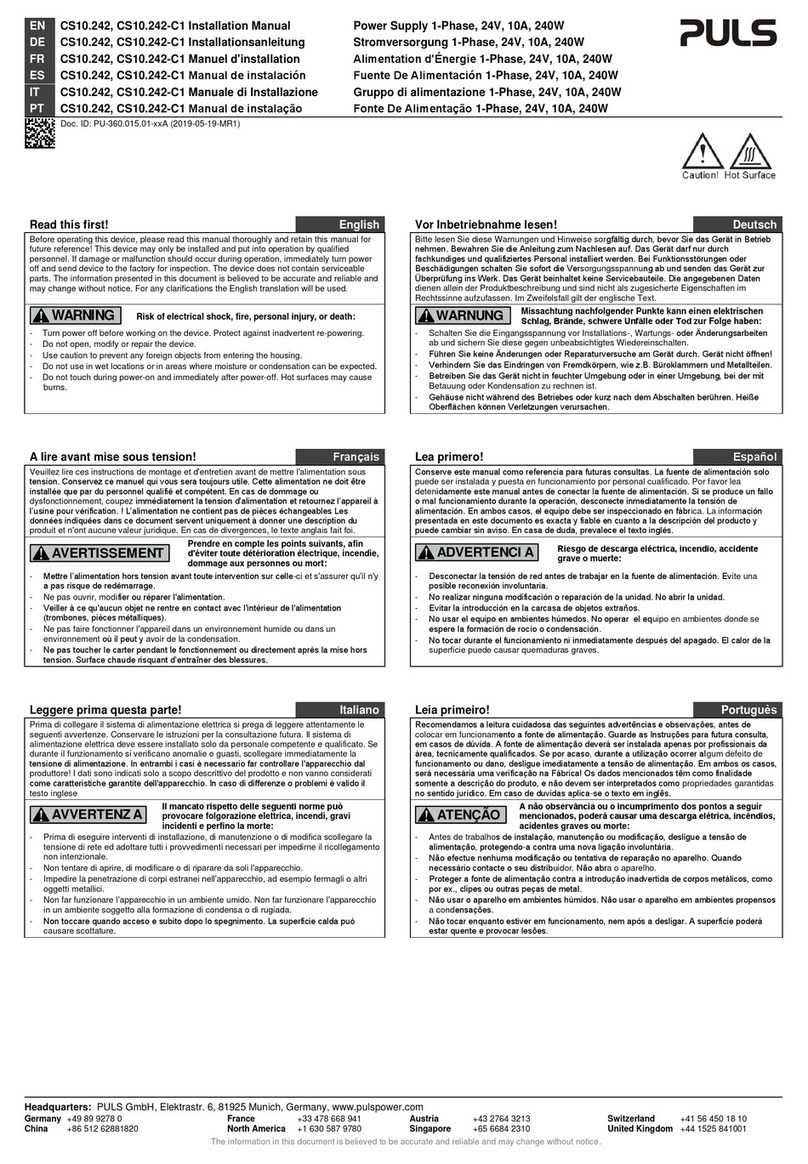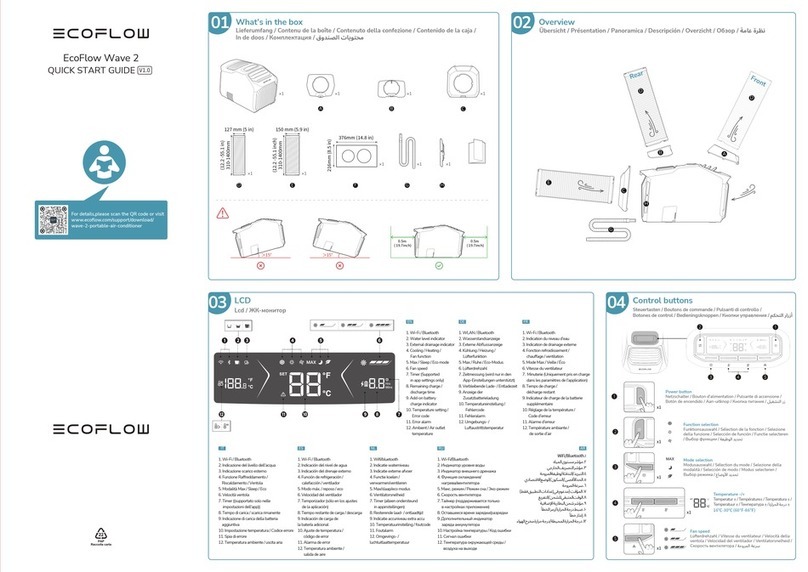Bray BBU Instruction Manual

Bray Controls Commercial Division
13788 West Road, Suite 200A
Houston, Texas 77041
Phone: 1-888-412-2729
www.braycommercialdivision.com
Battery Backup Unit (BBU)
Installation & Maintenance Manual
1
10/14/20

2
Battery Backup Unit (BBU) — Installation & Maintenance Manual Continued
Table of Contents
Bray Battery Backup unit Operation and Maintenance Manual
Safety Instructions..............................................................................................................3
Specifications......................................................................................................................4
Operation ...........................................................................................................................5
Battery Status Indicator .....................................................................................................5
Battery Charging................................................................................................................5
Quick Start Guide...............................................................................................................6
Setup...................................................................................................................................6
Activating the BBU.............................................................................................................7
Replacing Batteries ............................................................................................................7
Installation..........................................................................................................................8
Procedure Outline and Required Tools ........................................................................8
Actuator/BBU Preparation ............................................................................................8
Initial Assembly and Battery Installation ......................................................9,10,11,12
Control Board Wiring ..................................................................................................13
Setting the Fail Position and Alarm..................................................................14,15,16
Final Assembly .............................................................................................................17
Wiring.................................................................................................................18,19,20
FOR MORE INFORMATION ON THIS PRODUCT AND OTHER BRAY PRODUCTS
PLEASE VISIT OUR WEBSITE – www.braycommercialdivision.com

3
Battery Backup Unit (BBU) — Installation & Maintenance Manual Continued
Safety Instructions - Definition of Terms
Read and Follow these instructions
Save these instructions
WARNING
Indicates a potentially hazardous situation which, if not
avoided, could result in death or serious injury.
CAUTION
Indicates a potentially hazardous situation which, if not
avoided, may result in minor or moderate injury.
NOTICE
Used without the safety alert symbol indicates a potential
situation which, if not avoided, may result in an undesirable
result or state, including property damage.
Hazard Free Use
This device left the factory in proper condition to be
safely installed and operated in a hazard-free man-
ner. The notes and warnings in this document must
be observed by the user if this safe condition is to be
maintained and hazard-free operation of the device
assured.
Take all necessary precautions to prevent damage to
the BBU due to rough handling, impact, or improper
storage. Do not use abrasive compounds to clean the
BBU, or scrape its surfaces with any objects.
Configuration and setup procedures are described
in this document. Proper configuration and setup is
required for the safe operation of the BBU.
The control system in which the BBU is installed must
have proper safeguards to prevent injury to person-
nel, or damage to equipment, should failure of system
components occur.
This document does not cover every detail about ev-
ery version of the product described. It cannot take
into account every potential occurrence in installation,
operation, maintenance and use.
If situations transpire that are not documented in
sufficient detail, please request the required infor-
mation from the Bray Distributor or Representative
responsible for your area.
Qualified Personnel
A qualified person in terms of this document is one
who is familiar with the installation, commissioning
and operation of the device and who has appropriate
qualifications,
such as:
• Is trained in the operation and maintenance of
electric equipment and systems in accordance with
established safety practices.
• Is trained or authorized to energize, de-energize,
ground, tag and lock electrical circuits and equipment
in accordance with established safety practices.
• Is trained in the proper use and care of personal
protective equipment (PPE) in accordance with estab-
lished safety practices.
• Is trained in first aid.
• In cases where the device is installed in a potentially
explosive (hazardous) location – is trained in the
operation, commissioning, operation and maintenance
of equipment in hazardous locations.

4
Battery Backup Unit (BBU) — Installation & Maintenance Manual Continued
All information herein is proprietary, confidential, and may not be copied or reproduced without the expressed written consent of BRAY INTERNATIONAL, Inc.
The technical data herein is for general information only. Product suitability should be based solely upon customer’s detailed knowledge and experience with their application.
The right to change or modify product design or product without prior notice is reserved.
Battery Backup Unit (BBU) 24V Specifications
Power Requirements 24-27VAC or 30-38VDC (the minimum voltage is required to provide proper battery charging)
Use dedicated Class 2 non-bonded transformer rated 100VA per BBU
Power Output BBU output with 24VAC supply is 30-38 VDC
On failure of AC supply, battery output is 24-25.5 VDC
BBU will provide fail open or fail close operation
Battery Monitoring Local LED indicator and voltage free 2-wire normally open contact for remote monitoring
Battery Conservation Automatically shuts-o batteries after one minute or when actuator stops
Current Draw @ 24 VAC BBU only maximum 120mA standby (0.25 VA) Max. 420mA charging (10 VA)
Current Draw of 600 lb-in - 1.9A (with load)
Actuator with BBU 2,000 lb-in - 2.7A (with load)
5,000 lb-in - 4.1A (with load)
Power Protection Two 5 amp, 250V fast blow, 5x20mm fuses, one for the external power output circuit and
the other for the battery output circuit
Operating Temperature -4ºF (-20ºC) to 122ºF (50ºC) LED light may not function below -20ºF (-29°C)
Housing Die Cast Aluminium, Polyester finish, Nema 4X (IP 65)
Exposed Fasteners Stainless Steel
Batteries (2) 12 volt 1.4 ampere-hour (AH) rechargeable sealed lead acid battery wired in series
Features Valve regulated, spill proof construction allows safe operation in any position
Rugged impact resistant ABS case and cover (UL94-HB)
U.L. Recognized under le number MH 20845
Specications Battery Case: ABS plastic
Maximum discharge current (7 minutes): 4.2 amperes
4 years, depended on ambient Temperature
Shelf Life (% of nominal capacity at 68ºF (20ºC)
1 month = 97%
3 months = 91%
6 months = 83%
Operating Temperature Charge: -4ºF to 122ºF (-20ºC to 50ºC)
Discharge: -40ºF to 140ºF (-40ºC to 60ºC)
Storage: -40 to 140˚F (-40 to 60˚C)1
The BBU should be powered up for a minimum of 12 hours
CONSTRUCTION AND PERFORMANCE
Wiring
BATTERY SPECIFICATIONS
1 Leaving the battery in an unpowered state for long periods at ambient temperatures greater than 40˚F will result in excessive battery drain.
Conduit Entries (2) - 3/4”NPT Terminal Block - 14 to 24 AWG.
Size wires per NEC guidelines with respect to distance and current draw.
Max Distance Between Actuator
and Supply(ft)
Torque(in-lbs)60020005000
Iload(Amps)1.82.03.0
8 Ga873785524
10 Ga549494329
12 Ga345311207
14 Ga217195130
16 Ga137123 82
18 Ga 86 77 52

5
Battery Backup Unit (BBU) — Installation & Maintenance Manual Continued
Operation
The BBU is operated by a micro controller which per-
forms all of the functions pertaining to power man-
agement, battery monitoring and charging, and con-
trol of the Series 70 Servo NXT or On/Off Controller.
The BBU constantly monitors the incoming power. In
the normal mode of operation with power supplied to
the actuator, the batteries maintain a charge and are
in an offline mode. The power applied to the motor is
from the power supply, not the batteries.
When a power loss occurs, the BBU pauses for 5 seconds
and then reads the “Open/Close” fail position switch
setting. The BBU circuitry applies the stored power in
the batteries to move the valve or damper to the full
open or full closed position as initially designated by
the user. The BBU will allow up to one minute for the
actuator to attain the fail position. If the fail position
is reached before one minute, the BBU will detect the
loss of motor current and turn the power off to the
actuator to conserve battery power. The actuator re-
mains in this position until external power is restored
to the unit. When power is restored to the BBU, the
battery charge cycle commences.
Battery Status Indicator
The BBU has a bi-color red/green indicator on the
side of the battery enclosure to provide information
regarding the operation and battery status of the BBU.
Table 1 is a summary of the different indications.
Battery Charging
A battery charge cycle will commence upon the return
of power to the BBU. Charge cycles will require from a
few minutes to several hours depending upon the dis-
charged state of the battery, condition of the battery,
and ambient temperature. When the charge cycle is
complete, the batteries are held in a fully charged state
by applying a voltage which maintains the “Stand-by
Mode” of the battery.
Every 8 hours, a full charge cycle commences which
tests the condition of the batteries. This cycle will nor-
mally last a few seconds with batteries that are in good
condition. Batteries that require replacement will
require a longer period to complete the charge cycle.
After 12 hours, if the batteries cannot attain full
charge, the alarm relay is engaged to indicate that the
batteries require replacement. If your installing your
BBU to a S70 actuator, skip to page/section 8 (1.0). If
your BBU was shipped assembled to the actuator skip
to page/section 13 (4.4).
Indication Description
Solid Green The BBU is powered and the
batteries are fully charged.
Flashing Green The BBU is powered and the
batteries are charging.
Fast Flashing Red The BBU is not powered and the
actuator is seeking the fail position.
Slow Flashing Red The BBU is not powered and the
BBU is in low power stand-by.
Table 1 - Indicator Lamp Guide

6
Battery Backup Unit (BBU) — Installation & Maintenance Manual Continued
Remove
Battery Cover
Activate Batteries
Power & Command Signal
See page 7
Connect Power and Command Signal
per the respective wiring diagrams
found on pages 18 to 20 of this
document or on the lid of the actuator.
Replace Battery
Cover & tighten
down screws
11
2
2
3
3
Setup
To gain access to the BBU electronics module, the BBU
battery cover must be removed by loosening the 4 screws
which hold the battery cover in-place as shown in Figure 1.
Carefully lift the battery cover and then let the cover hang
to the side of the mounting base. The BBU electronics mod-
ule is now accessible as shown in Figure 2. With the BBU
cover removed, the unit can be commissioned with the
appropriate field wiring and fail position settings.
The BBU supports both Modulating and On/Off services.
The operating mode is determined by the field wiring
connection to both the BBU and Servo NXT & On/Off
Controller. The following sections describe how to config-
ure the BBU for the available operating modes.
Quick Start Guide
Figure 1 - Battery housing removal

7
Battery Backup Unit (BBU) — Installation & Maintenance Manual Continued
Activating BBU
The BBU is shipped from the factory with the bat-
tery power disconnected to preserve the battery life.
To connect the batteries and activate the BBU do the
following:
1. Ensure that the underlying valve and configura-
tion of the Series 70 Actuator is complete before
connecting the power to the BBU. This also includes
all field wiring.
The Input Power should be OFF at this time.
2. Set the fail position switch as described on page 6
to either “open” or “close”. This will be the position
that the actuator will seek during a power outage.
3. Insert the fuse supplied under the white label.
WARNING – ONCE BATTERY POWER
IS APPLIED TO THE BBU, THE UNIT IS
OPERATIONAL AND MAY CAUSE THE
ACTUATOR TO SEEK THE FAIL POSITION
IF THE MAIN POWER IS NOT CONNECTED
TO THE BBU.
Replacing Batteries
Disconnect the fuse on the right (Figure 6) before at-
tempting to remove the batteries. The BBU batteries
are replaced by loosening the 4 screws which hold the
battery housing to the battery housing cover (Figure
1). Extreme care is required when separating the bat-
tery housing cover from the battery housing to prevent
damage to the electronics circuit board.
Once the battery housing is open, remove the two
screws which hold the electronics mounting plate and
battery holder as shown in Figure 9.
Figure 6 - Battery activation connection
Figure 9 - Mounting plate screw removal
Table 2 - Battery Wiring Color Code Chart
Figure 10 - Batteries removed from BBU housing
Carefully remove the mounting plate to gain access
to the batteries. Remove the batteries and disconnect
the spade type connectors from the batteries as shown
in Figure 10. Connect the new batteries following the
connection chart in TABLE 2
Reverse the disassembly process to re-install the bat-
teries. Ensure that the batteries are installed with the
terminals facing toward the bottom of the housing to
avoid interference between the battery terminals and
the mounting plate.
Wire Color Description
Red Battery 1 - POSITIVE
Blue Battery 1 - NEGATIVE
Orange Battery 2 - POSITIVE
Purple Battery 2 - NEGATIVE

8
Battery Backup Unit (BBU) — Installation & Maintenance Manual Continued
1.0 Procedure
For assembly of a Bray Battery Backup Unit (BBU) to
a Bray S70 electronic actuator.
2.0 Tools Required
• Wire Strippers
• Wrench
• Allen Wrench
• Signal Generator
• Power Supply (100 VA Minimum Isolated Transformer)
• Screw Driver
3.0 Equipment
• Series 70 Actuator
• BBU
• Batteries (2)
• Wiring Diagram with applicable Wire Colors
• Mounting Hardware
• O-Rings
Installation
3.1 Wear safety glasses and all other appropriate safety equipment as directed by Bray HSE policies
before performing any of the listed tasks.
3.2 Retrieve all parts required to construct the S70/BBU assembly as specified on sales order's Traveler
BOM. Some hardware depicted below [Figure 1].
CAUTION: Risk of Property Damage.
Do not apply power to the system
before checking all wiring connec-
tions. Short circuited or improperly
connected wires may result in
permanent damage to the equipment.
IMPORTANT: Do not exceed the electrical ratings of the S70 Actuator or BBU.
CAUTION: Risk of Electric Shock. Discon-
nect the power supply before making
electrical connections to avoid electric
shock.
Figure 1
Actuator/BBU Preparation

9
Battery Backup Unit (BBU) — Installation & Maintenance Manual Continued
3.3 Remove lid of the actuator minding the lid to body O-Ring. [Figure 2].
3.4 Remove four (4) BBU actuator mounting bolts and two (2) conduit plugs from side of S70 actuator [Figure 3].
Figure 2
Figure 3
Initial Assembly and Battery Installation

10
Battery Backup Unit (BBU) — Installation & Maintenance Manual Continued
3.5 Disengage the four (4) BBU lid bolts from BBU [Figure 4].
3.6 Remove two (2) battery cover panel screws from BBU [Figure 5].
Figure 4
Figure 5

11
Battery Backup Unit (BBU) — Installation & Maintenance Manual Continued
3.7 Connect four (4) battery terminals to two (2) 12VDC batteries as shown in the applicable wiring
diagram for the specific S70 actuator assembly. See [Figure 6] for example.
3.8 Gently insert the batteries into the BBU case with the battery terminals positioned nearest
to the circuit board [Figure 7].
Wire Color Description
Battery 1 - Postive
Battery 1 - Negative
Battery 2 - Postive
Battery 2 - Negative
Red
Blue
Orange
Purple
Figure 6
Figure 7

12
Battery Backup Unit (BBU) — Installation & Maintenance Manual Continued
3.9 Re-attach BBU card plate using two (2) screws previously removed with silver holding strips
crisscrossed like before [Figure 8].
4.0 Add four (4) O-rings to two (2) Long Cap Screws and two (2) Small Cap-Screws [Figure 9].
Figure 8
Figure 9
Figure 10
4.1 Insert these two (2) Long Cap Screws with O-rings into the bottom two (2) holes of BBU base
and assemble to S70 actuator.
4.2 Install the Medium Cap Screws on the top two (2) holes of BBU base that attach to S70 actuator.
4.3 Install two (2) Small Cap Screws with O-rings on top two (2) holes of BBU base [opposite side of
Medium Cap Screws] and secure using Hex Screw Nuts. See [Figure 10] for final BBU attachment
to S70 actuator.

13
Battery Backup Unit (BBU) — Installation & Maintenance Manual Continued
BLACK
WHITE/RED
MOTOR BBU POWER
DC PWR (-)
DC PWR (+)
STATUS
PGM
FAULT
PWR
OPEN
CLOSE
OPEN
COMMON
CLOSE
24V COMMAND
INPUT
BBU LIMIT SW
COM
OPEN
LIMIT
CLOSE
LIMIT
DRIVE DIR
DRIVE ENABLE
COMMON
HANDWHEEL
COM
OPEN
CLOSE
TORQUE SW
TORQUE
OPTION
OFF ON
24V ON/OFF CONTROLLER
FUSE
1 2
CTSON
COM
+3.3V
WIPER
COM
CLOSE
OPEN
COM
HW
COM
COM
CLOSE
OPEN
COM
COM
CLOSE
OPEN
INPUT+
INPUT-
OUTPUT+
OUTPUT -
NEUTRAL
LIVE
NEUTRAL
LIVE
OPEN
CLOSE
NEUTRAL
®
Control Board Wiring
Figure 11
On/Off
On/Off NXT
Servo NXT
4.4 All wiring from BBU to Actuator shall pass through the conduit ports. Do not allow sharp
conduit threads to damage the wire insulation. Use the appropriate Bray S70 wiring diagram for
terminal locations and wire color selection. See [Figure 11] for applicable electronic modules.

14
Battery Backup Unit (BBU) — Installation & Maintenance Manual Continued
4.5 Fail Position - The actuator position during a power loss is determined by the close/Open switch
setting [Figure 12] on the BBU. The switch setting is only recognized at the time of a power failure.
Alarm Relay Contact - The BBU provides a voltage free relay contact shown in Figure 12 which is
normally open. The contacts close when the batteries cannot hold a charge and require
replacement. When power is applied to the BBU for the first time or when power is reapplied after a
power failure, the BBU commences a battery charge cycle. Depending upon the depth of
discharge and the condition of the batteries, a charge cycle can range from under 1 hour up to 8 hours.
When a charge cycle operates for more than 12 hours, this indicates that the batteries can no longer
hold a full charge and must be replaced resulting in the Alarm Relay Contact closing.
N.O
OPEN
N.C
CLOSE
FAIL POSITION
ALARM
Figure 12

15
Battery Backup Unit (BBU) — Installation & Maintenance Manual Continued
4.6 Wire the Power Supply and Command Signal Generator according the wiring diagram specific to
your model. Power Supply and Command Signal Generator shall not be powered on yet.
4.7 Insert the fuse supplied under the white label. See [Figure 13] below. Verify LED indicator on the
side of the BBU is flashing RED and the Power LED on the BBU Circuit Board is on.
Figure 13
WARNING – ONCE BATTERY POWER
IS APPLIED TO THE BBU, THE UNIT IS
OPERATIONAL AND MAY CAUSE THE
ACTUATOR TO SEEK THE FAIL POSITION
IF THE MAIN POWER IS NOT CONNECTED
TO THE BBU.

16
Battery Backup Unit (BBU) — Installation & Maintenance Manual Continued
4.8 Turn on the Power Supply to the BBU. Verify LED indicator on the side of the BBU is flashing or steady
GREEN, see [Figure 14] below. Electrically command the actuator full open and close to verify proper
actuator operation.
4.9 Rotate the actuator to the position opposite of the Fail Position. Turn off the Power Supply and verify
that the BBU drives the actuator to the full Fail Position and the LED indicator on the side of the BBU
is Rapidly flashing RED. After the actuator has reached full Fail Position, the LED indicator will Slowly
flash RED. See [Figure 15] for details.
Figure 14
Figure 15 Indication Description
Solid Green The BBU is powered and the
batteries are fully charged.
Flashing Green The BBU is powered and the
batteries are charging.
Fast Flashing Red The BBU is not powered and the
actuator is seeking the fail position.
Slow Flashing Red The BBU is not powered and the
BBU is in low power stand-by.

17
Battery Backup Unit (BBU) — Installation & Maintenance Manual Continued
Final Assembly
5.0 Reconnect the top and bottom BBU case assemblies. Be careful not to pinch or damage wiring and
ensure the O-Ring is in place. [Figure 16 & 17]
Figure 16
Figure 17

18
Battery Backup Unit (BBU) — Installation & Maintenance Manual Continued
Battery Backup (BBU) - Wiring
24VAC On/Off Controller BBU (BCD-WD-A014-2)
BLACK
WHITE/RED
MOTOR BBU POWER
DC PWR (-)
DC PWR (+)
STATUS
PGM
FAULT
PWR
OPEN
CLOSE
OPEN
COMMON
CLOSE
24V COMMAND
INPUT
BBU LIMIT SW
COM
OPEN
LIMIT
CLOSE
LIMIT
DRIVE DIR
DRIVE ENABLE
COMMON
HANDWHEEL
COM
OPEN
CLOSE
TORQUE SW
TORQUE
OPTION
OFF ON
24V ON/OFF CONTROLLER
FUSE
12
CTSON

19
Battery Backup Unit (BBU) — Installation & Maintenance Manual Continued
Battery Backup (BBU) - Wiring
On/Off NXT BBU (BCD-WD-A034-2)

20
Battery Backup Unit (BBU) — Installation & Maintenance Manual Continued
Battery Backup (BBU) - Wiring
24VAC Modulating NXT BBU (BCD-WD-A035)
Other manuals for BBU
1
Table of contents
Popular Power Supply manuals by other brands

Alternative Heating & Supplies
Alternative Heating & Supplies SUREFIRE 512 STOVE SENTRY instruction manual

Hama
Hama Universal Notebook Power Supply Operating instruction
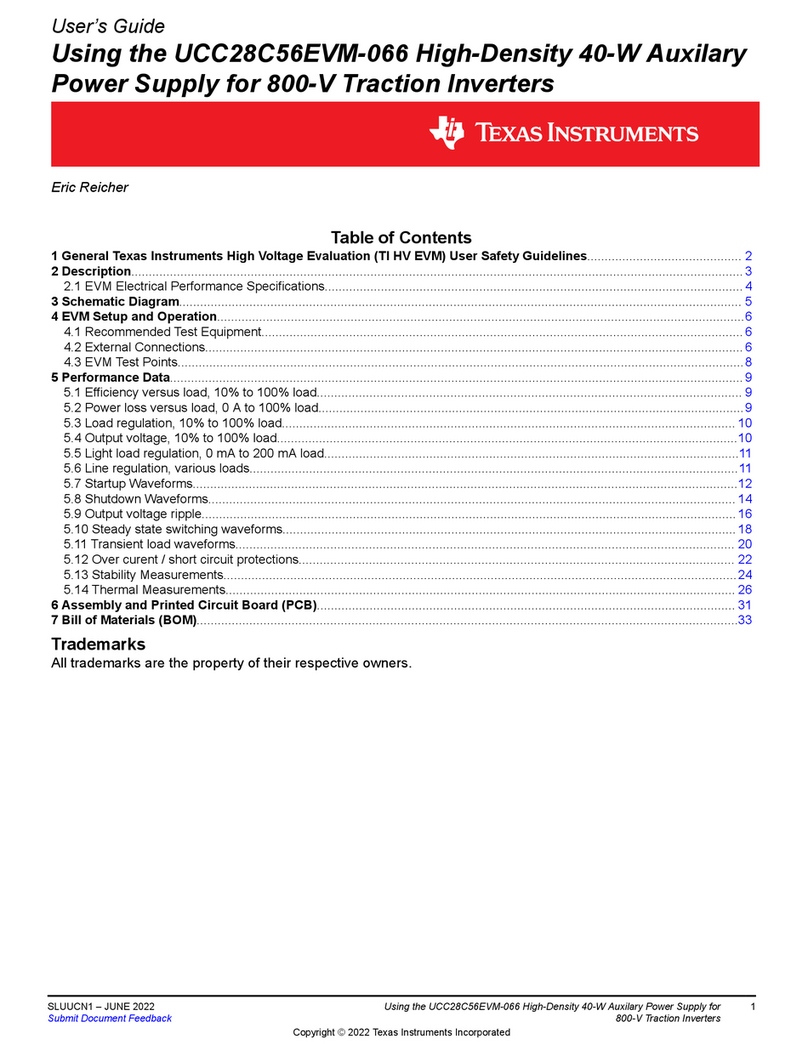
Texas Instruments
Texas Instruments UCC28C56EVM-066 user guide

Tyco
Tyco 1948 Series Installation & operating instructions
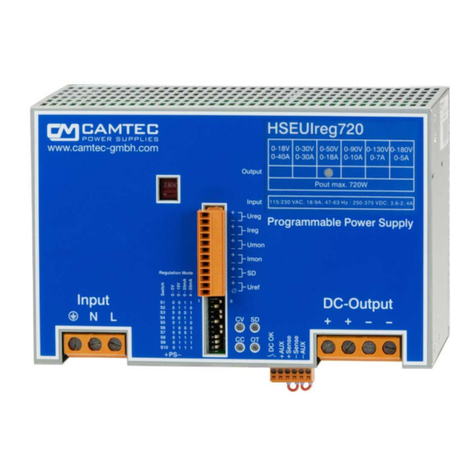
Camtec
Camtec HSEUiREG07201 Series manual

Swagelok
Swagelok M200 User instructions
